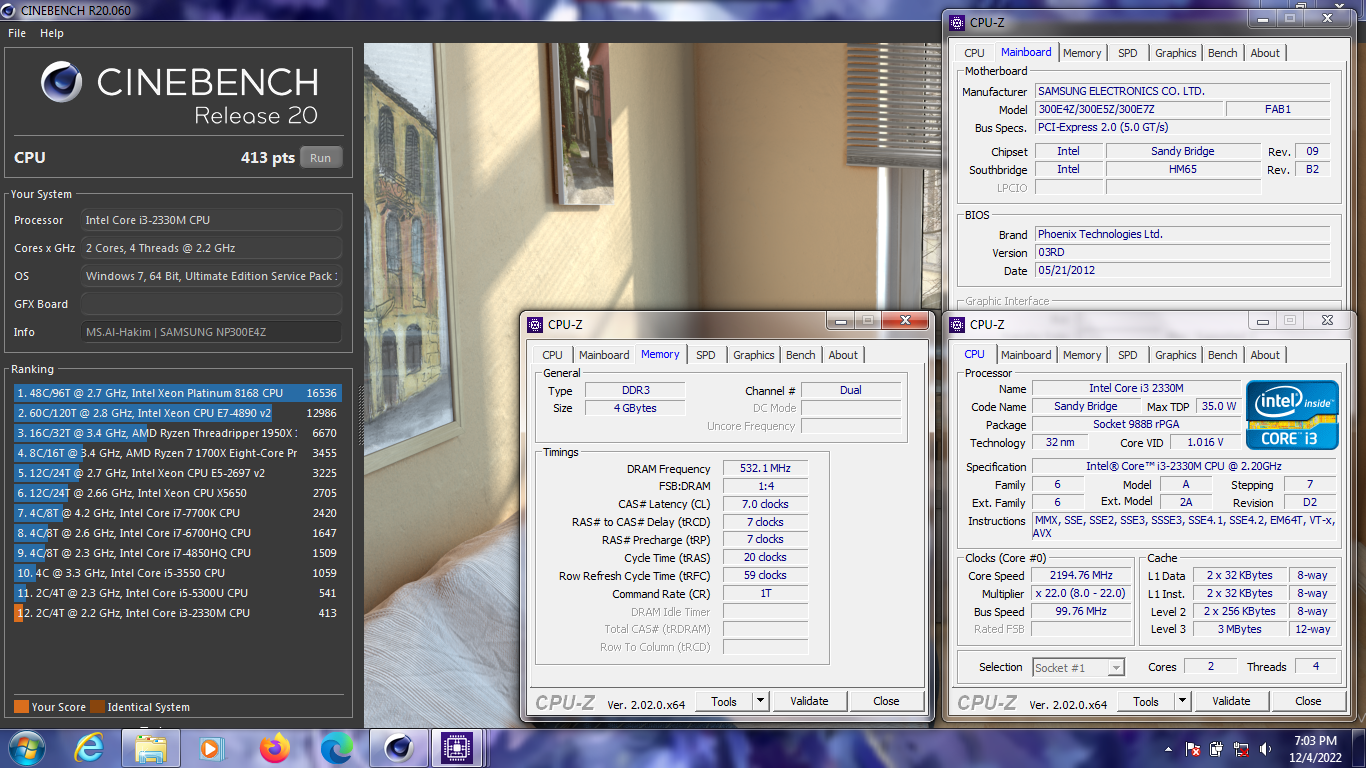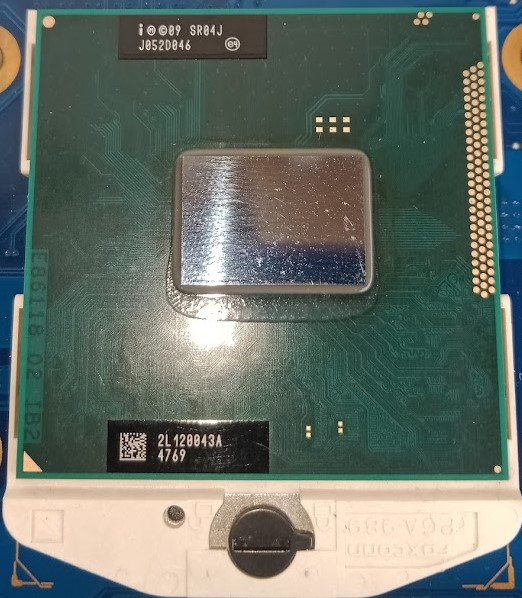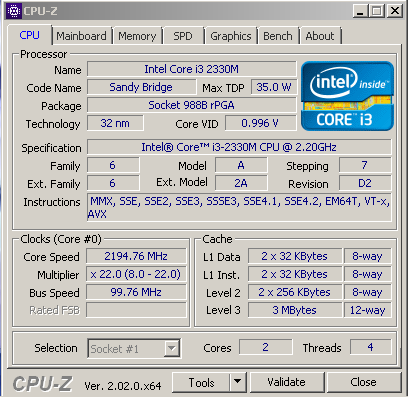Cinebench - R20 score 413 pts with a i3-2330M
Thursday, 01 January 1970 07:00 | Update at null
Media Gallery
Screenshot

Device, Setup, etc



URL
https://hwbot.org/submission/5138293-
Information Detail
Hardware: Intel Core i3 2330M
Specs:CPUID : Intel(R) Core(TM) i3-2330M CPU @ 2.20GHz
Architecture : x86
Codename : Sandy Bridge
L3 Cache : 3MB
Clock : 2.20GHz
Core/Thread : 2/4
TDP : 35W
Technology : 32nm
Socket : PPGA988
IGPU : Intel HD Graphics 3000 Mobile
See more specification...
Software: Cinebench - R20
Score: 413 pts
About: Cinebench - R20Cinebench R20 is one of the most popular CPU benchmarks developed by Maxon, the company behind the professional 3D animation software Cinema 4D. This benchmark is designed to test processor performance in complex photorealistic rendering scenarios, utilizing the latest rendering engine from Cinema 4D Release 20. Cinebench R20 provides a more demanding and realistic test compared to previous versions like R15, making it a relevant benchmark for modern systems and processors.
In this test, the system is designed to render a high-quality 3D scene that utilizes various advanced rendering techniques, such as global illumination, area shadows, physical materials, and full CPU utilization down to the smallest cores and threads. Cinebench R20 requires more memory, processing power, and longer render times, providing a more accurate representation of a processor's real-world performance, especially in demanding tasks like rendering, video editing, and 3D simulation.
Unlike previous versions, Cinebench R20 does not include GPU/OpenGL testing, so its primary focus is purely on the CPU's ability to handle multi-threaded workloads. The resulting scores are presented in points (pts), where higher values indicate the CPU's ability to complete rendering processes faster and more efficiently. This is crucial for content creators, designers, and professional users looking to select the best CPU for their productivity needs.
Cinebench R20 has become an industry standard for reviewers, overclockers, and technicians in objectively and consistently testing CPU performance. With workloads that reflect real-world scenarios and optimizations for modern processors, this benchmark remains one of the most important tools for evaluating and comparing system performance in depth.
The Intel Core i3-2330M is a dual-core mobile processor launched in 2011 as part of Intel’s second-generation Sandy Bridge lineup. Designed for mid-range laptops, this processor features 2 cores and 4 threads thanks to Intel Hyper-Threading Technology, allowing it to handle light to moderate multitasking workloads efficiently. Operating at a fixed clock speed of 2.2 GHz and built on the 32nm process, the i3-2330M does not include Intel Turbo Boost, which limits its ability to dynamically increase performance under heavier loads, but it remains a solid choice for everyday use.
With a TDP of 35W, the i3-2330M balances power consumption and performance reasonably well for its era. It integrates Intel HD Graphics 3000, a GPU with a base clock of 650 MHz and a dynamic frequency up to 1.1 GHz. While not designed for modern gaming or demanding graphic applications, this integrated GPU handles HD video playback, basic 3D rendering, and older or lightweight games at low settings with relative ease. Users looking for casual computing and multimedia playback will find it sufficient.
In real-world usage, the Core i3-2330M performs well for standard computing tasks such as web browsing, streaming, office productivity (e.g., Word, Excel), and simple photo editing. Its Hyper-Threading capabilities give it a performance edge over older dual-core processors that lack thread duplication. However, the lack of Turbo Boost and a relatively low base frequency mean that it can struggle under CPU-intensive workloads like video rendering or large spreadsheet processing, especially when compared to more modern CPUs.
This specific configuration was tested on a SAMSUNG 300E4Z, a laptop originally shipped with an Intel Celeron B815 processor but later upgraded to the i3-2330M for better performance. With 4GB of DDR3 dual-channel memory and Windows 7 installed, the system runs smoothly for basic daily use, making the i3-2330M a practical upgrade option for budget-conscious users seeking improved performance without replacing their entire system.
Hardware Detail:
Device: SAMSUNG 300E4Z (This device originally used Celeron B815 which was upgraded to i3 2330M.)
RAM: 4GB DDR3 Dual Channel
OS: Windows 7
* Not Avaiable
